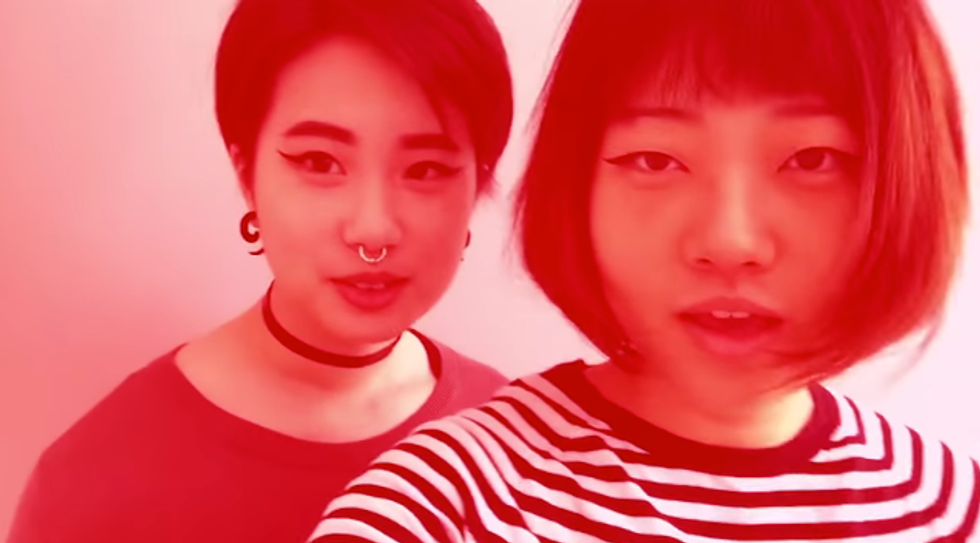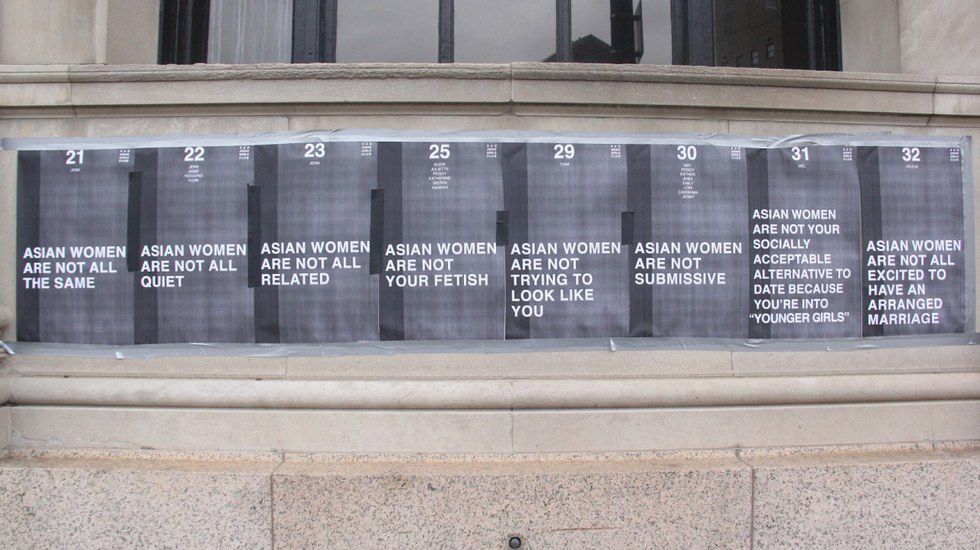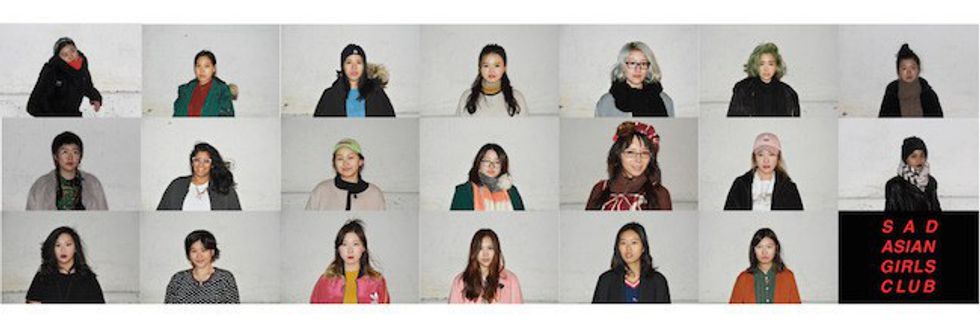"ASIAN WOMEN ARE NOT SUBMISSIVE."
"ASIAN WOMEN ARE NOT YOUR FETISH."
"ASIAN WOMEN ARE NOT TALKING SH*T ABOUT YOU WHEN WE SPEAK IN OUR LANGUAGE."
These are only three of the 100 submissions that were compiled and displayed on posters all over the Rhode Island School of Design campus as well as its surrounding community, candidly taking on the "culture of passiveness and silence of Asians" that has somehow seeped into Western society.
Having already caught the attention of the Huffington Post and Vice's i-D Magazine, RISD students, Esther Fan and Olivia Park first made waves last December when they posted their short film on YouTube. Titled "Have you Eaten?" the video aims to highlight the hypocrisy behind events dealing with beauty standards and body image experienced by young Asian-American women, typically children of first-generation immigrants, within the private sphere by transferring it to an art medium for a virtual-public sphere to view and discuss.
Self-managed and self-funded, the Sad Asian Girls Club presents itself in an eye-catching fashion, strictly maintaining a red, black and white aesthetic with large, bold capital lettering, all while introducing intelligent and self-aware individuals of Asian heritage. Their next project broadened the conversation even further; the graphic design duo organized their "ASIAN WOMEN ARE NOT" campaign, which featured 100 of the most common slogans submitted by young Asian-Americans and shined a light on the many misconceptions Asian-Americans have to confront on a daily basis in the most straight-forward fashion as possible.
Their latest project, titled "MODEL MINORITY," is a video series that features a myriad of diverse Asian-American individuals sharing their experiences with the model minority myth, which implies that Asians are automatically more successful, wealthy and hard-working than other minorities and therefore are not eligible to be subject to discrimination. This remains to be the most apparent and frustrating Asian archetype, as it not only creates unattainable standards for Asians, but also pits us against each other.
The reason this movement of sorts is unique is that the agenda and ideas that drive SAGC do not intend to suppress pride in one's culture. Let me preface all of this by saying it is very easy to find yourself inferior to others as a young Asian-American girl living in America. You see little of yourself represented in the media, let alone as a well-rounded, realistic role model. You are sometimes romanticized or exoticized or fetishized because of a preconceived notion someone harbors toward your race. Your values and priorities are divided between two separate cultures that belong to two separate sides of the world: one encourages openness and individualism, while the other promotes preservation of tradition and passivity to a certain degree. It becomes difficult to find the middle ground that satisfies the expectations of your family, those around you living in Western society and yourself. Because of this, many young Asian-Americans feel more inclined to reject the traditions of their family heritage and consider themselves solely as Westerners. In fact, the majority of Asian-Americans that I've met have admitted that they had once wished or still do wish for themselves to have been born white.
To me, SAGC is that middle ground. Personally, I've only recently started addressing these problems that I had ignored for so many years. I hated acknowledging my culture, loathed speaking in Chinese and refused to take part in something that set me apart from my white American peers. Today, I'm practicing my Chinese on a daily basis, immersing myself in the latest Chinese music and movies, and teaching English to Chinese students through the "Palfish" app. I have never embraced or held so much respect toward my Chinese heritage as much as I do now.
Essentially, it is vital that all Asian-Americans are made aware that pride in their Asian culture does not need to be sacrificed in exchange for the desire to be accepted and heard in Western society.
Learn more about the Sad Asian Girls Club here.



























